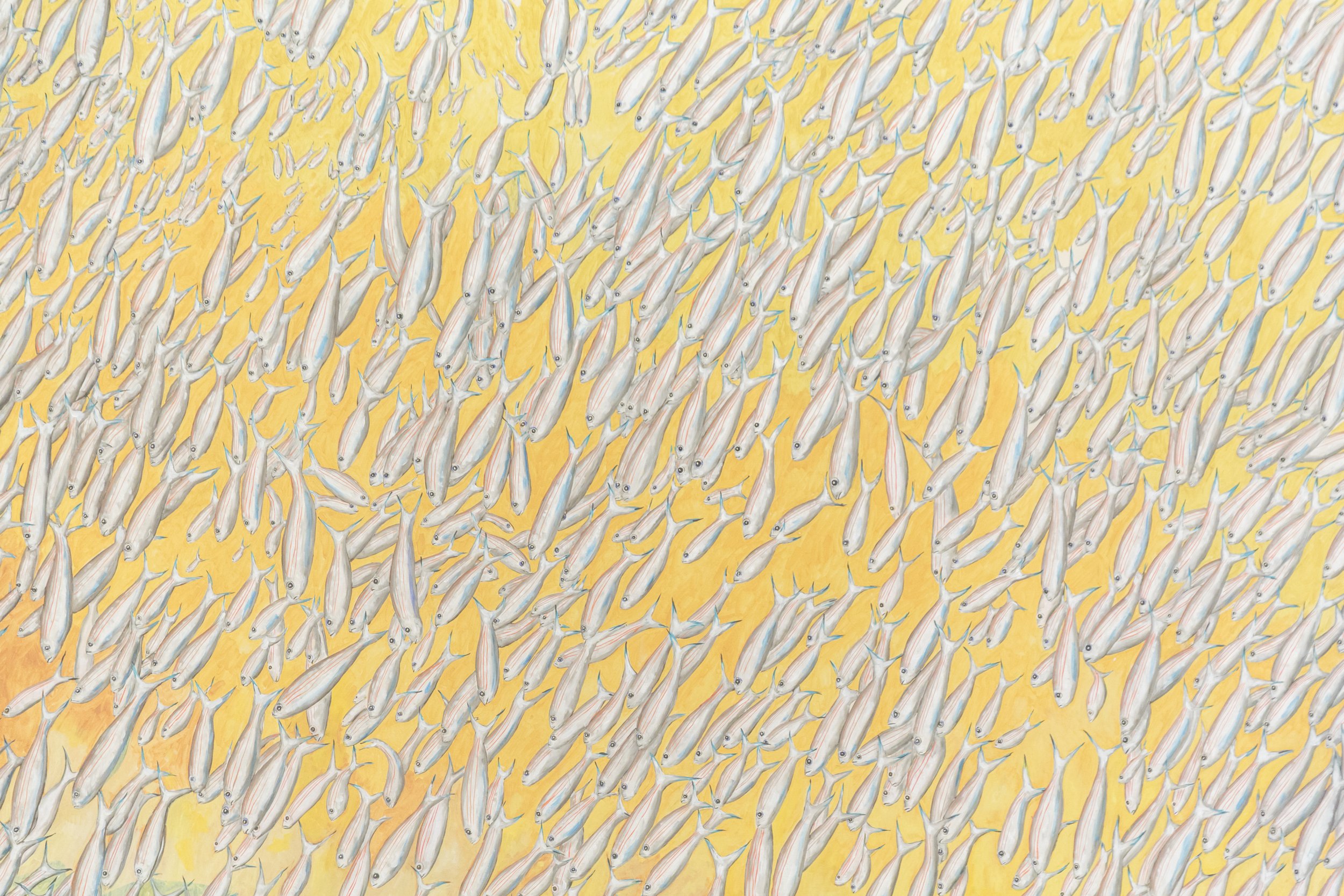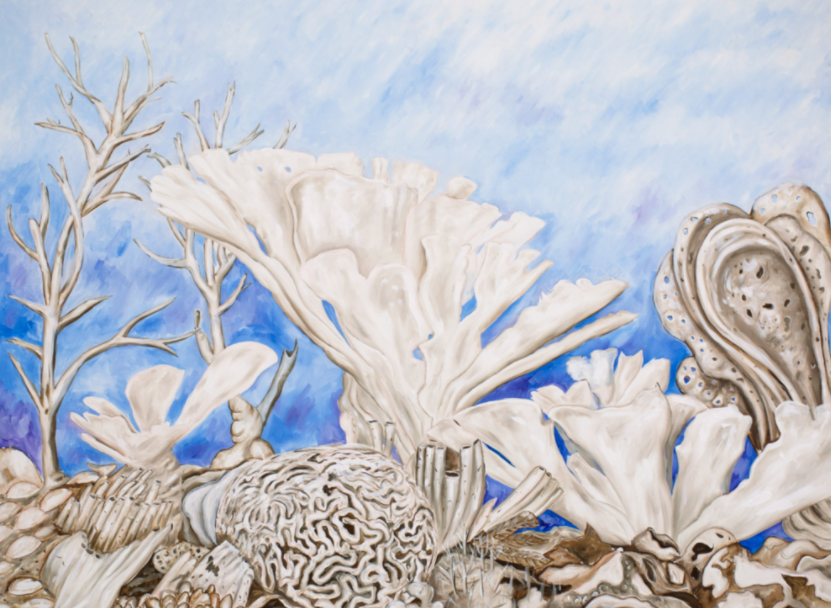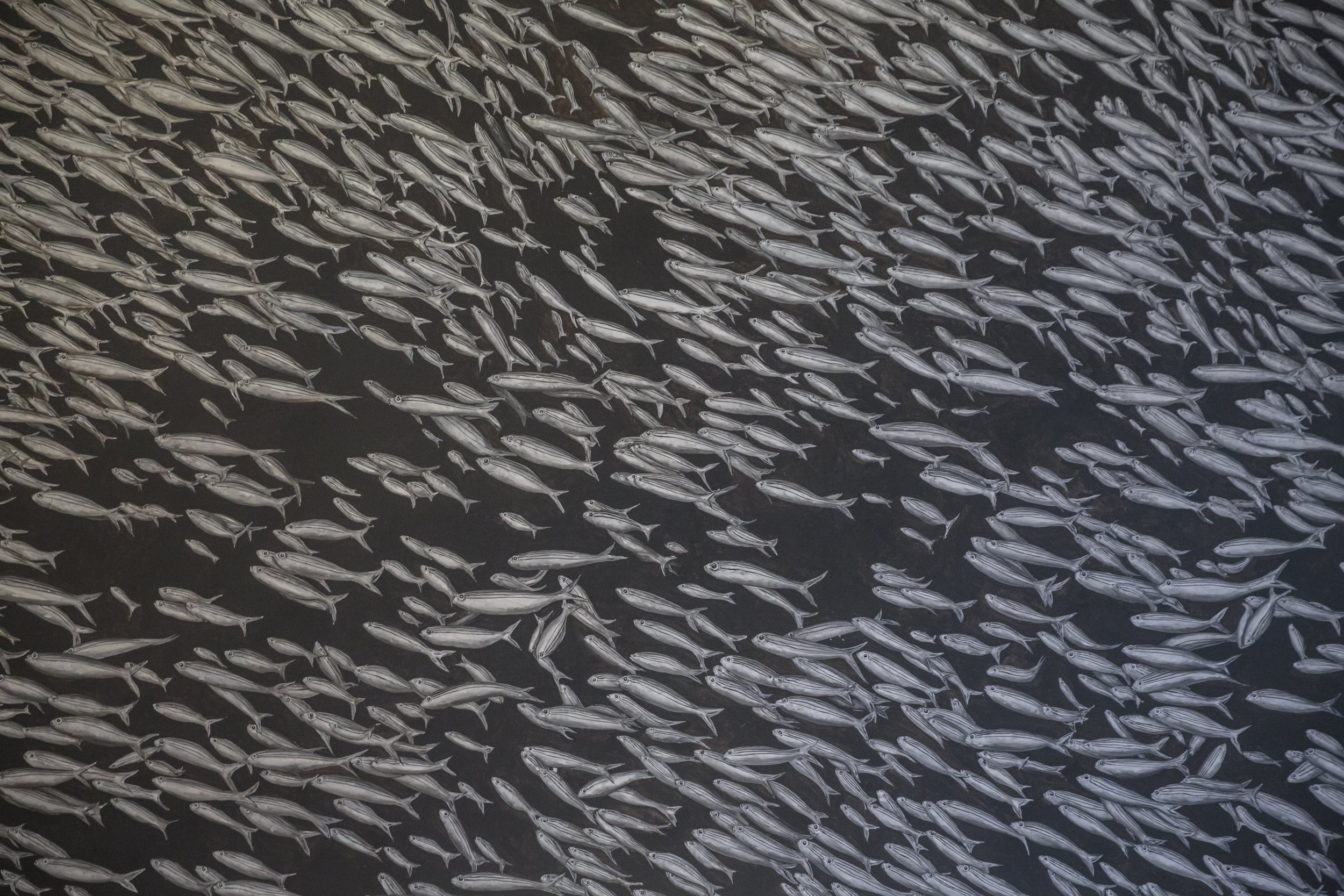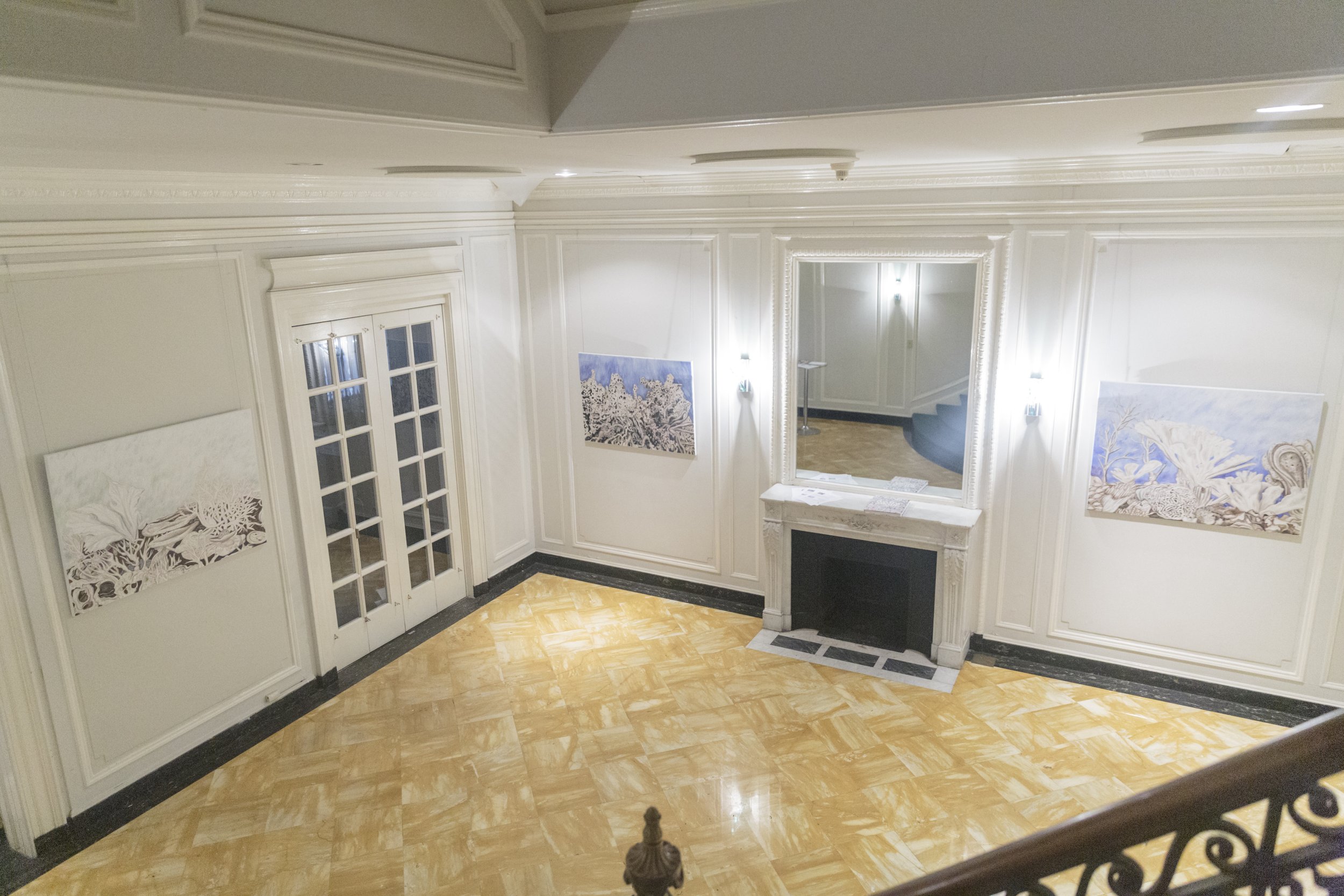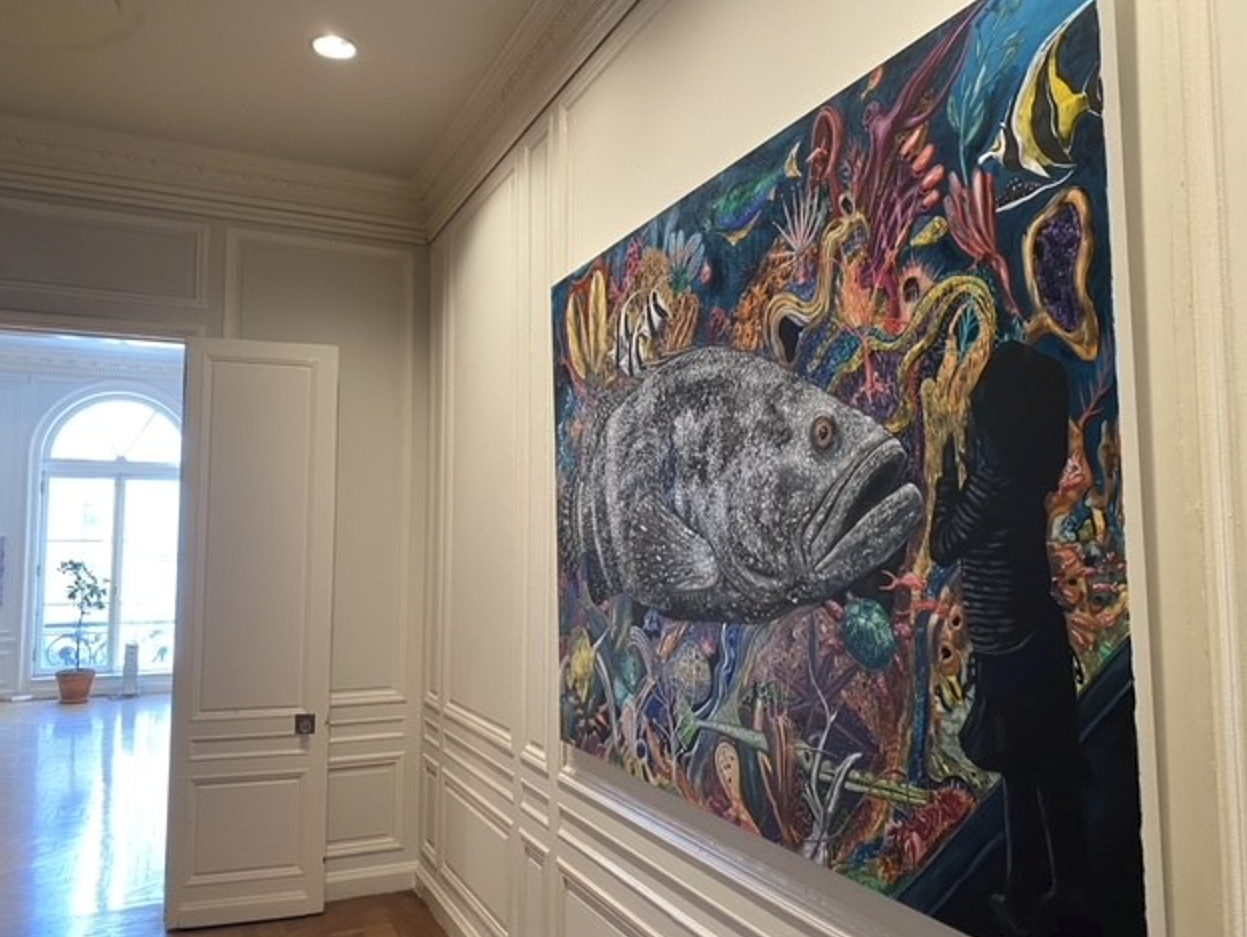The German Consulate General New York and 1014 hosted a discussion between Yasemin Pamuk, Head of the Cultural and Science Department, German Consulate New York; Charles A. Riley II, PhD, Director, Nassau County Museum of Art; and Donald Kuspit, art critic and poet, on how to bridge the divide between science and art on the occasion of the exhibition "The Life Aquatic. Oceanic Visions" by Doug Argue.
The ocean covers more than two third of Earth's surface and is a fundamental reason why life exists. Human impact on the ocean has been profound and ubiquitous. Over the last century, the ocean has absorbed most of the heat and greenhouses gases produced by human activities—the burning of fossil fuels we use to drive electricity, heat, agriculture, and transportation. As these greenhouse gases trap more energy from the sun, the ocean is absorbing increasingly more heat, resulting in an increase in sea surface temperatures and rising sea level. These changes are expected to lead to further accelerated changes in climate patterns around the world.
The choices we make matter. With the world waking up to the clear and present threat of climate change, it is time to ask what we can do—what we must do—to avoid the mistakes of the past and wisely steward the ocean and its aquatic life even as we turn to it for solutions.
Of all knowledge-making and communication practices, art is perhaps the most proficient at imagining infinite possibilities. Art has a unique ability to affect us on an emotional level, providing spaces to visualize the global challenges we face while imagining their solutions. By bringing together perspectives of art and science, we push to address habits, perspectives and patterns of action, all necessary approaches to create sustainable change.
Charles A. Riley II, PhD, is in his fifth year as director of the Nassau County Museum of Art, where he has curated shows ranging from The Jazz Age to True Colors, The Eighties and Energy to the current hit show, The Art of Music (featuring many of the most important instruments as well as artists in the history of the relationship between art and music). Since taking the helm at the museum, he has turned around its finances, balancing the budget for the first time in history, built attendance, expanded the programs both in-person and online, and created a master plan for its future, including a cultural landscape plan for the nationally listed arboretum.
Donald Kuspit is an art critic and a poet, known for his practice of psychoanalytic art criticism. He has published on the subjects of Avant-garde aesthetics, Postmodernism, Modern art, and Conceptual art. Kuspit graduated from Columbia College in 1955, and earned a M.A. from Yale University in 1958. He received his PhD in philosophy from the Goethe University Frankfurt in 1960. Kuspit next taught at Pennsylvania State University and became increasingly interested in art history. He earned a M.A. there in 1964.

